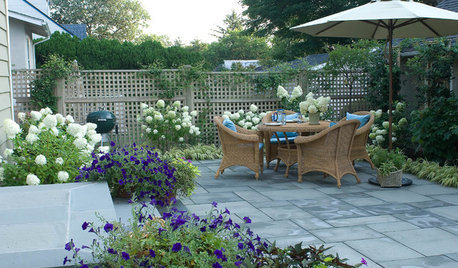Fall soil prep and problem-fixing
seedintheground
9 years ago
Related Stories

SELLING YOUR HOUSEFix It or Not? What to Know When Prepping Your Home for Sale
Find out whether a repair is worth making before you put your house on the market
Full Story
GARDENING GUIDESHow to Prep Your Ground for a Healthy New Lawn
Seed or sod that falls on weedy, lumpy soil is a wasted effort. Follow these steps to ensure that your new lawn will thrive
Full Story
REMODELING GUIDESThe Hidden Problems in Old Houses
Before snatching up an old home, get to know what you’re in for by understanding the potential horrors that lurk below the surface
Full Story
GARDENING AND LANDSCAPINGGet It Done: Clean and Prep the Patio
Haul out the hose and bid cobwebs farewell. It's time to renew your outdoor room for relaxing, dining and entertaining
Full Story
FALL GARDENING5 Ways to Put Fall Leaves to Work in Your Garden
Improve your soil and yard the organic way with a valuable garden booster that grows on trees
Full Story
KITCHEN DESIGNKitchen Design Fix: How to Fit an Island Into a Small Kitchen
Maximize your cooking prep area and storage even if your kitchen isn't huge with an island sized and styled to fit
Full Story
HOUSEKEEPING10 Problems Your House May Be Trying to Show You
Ignore some of these signs and you may end up with major issues. We tell you which are normal and which are cause for concern
Full Story
KITCHEN WORKBOOK4 Steps to Get Ready for Kitchen Construction
Keep your project running smoothly from day one by following these guidelines
Full Story
MONTHLY HOME CHECKLISTSYour Checklist for Quick Houseguest Prep
Follow these steps to get your home ready in a hurry for overnight visitors
Full Story
ENTERTAININGGenius Home Prep: A Guest Room in a Box
No dedicated guest room? Make hosting overnighters easier by keeping the essentials in one place
Full StoryMore Discussions







Kimmsr
lisanti07028
Related Professionals
Kenmore Landscape Architects & Landscape Designers · Sand Springs Landscape Architects & Landscape Designers · Allentown Landscape Contractors · Aloha Landscape Contractors · Brownsville Landscape Contractors · Coram Landscape Contractors · Dixon Landscape Contractors · Wanaque Landscape Contractors · Shafter Landscape Contractors · Fort Mill Decks, Patios & Outdoor Enclosures · Meridian Decks, Patios & Outdoor Enclosures · Miami Decks, Patios & Outdoor Enclosures · Mobile Decks, Patios & Outdoor Enclosures · Monroeville Decks, Patios & Outdoor Enclosures · Royal Oak Decks, Patios & Outdoor Enclosurestoxcrusadr
lazy_gardens
subk3
Kimmsr